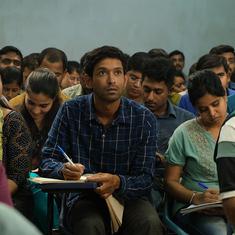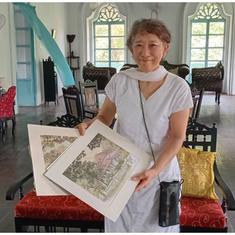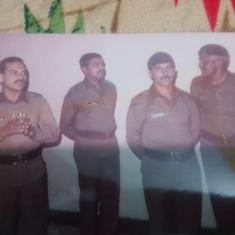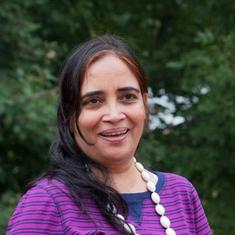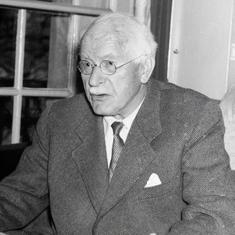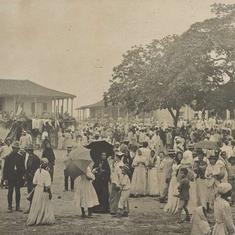In his new book, Incarnations: India in 50 Lives, Sunil Khilnani, historian and director of the India Institute at King's College, London narrates the story of India through short biographies of 50 prominent Indians. These include well-known figures as Buddha, Mahatma Gandhi, Raj Kapoor, and MF Husain, and lesser-known ones like Malik Ambar, the 17th century military man who came to India as a slave, and Chidambaram Pillai, the Tamil freedom fighter who started the first Indian shipping service in 1906.
Originally commissioned as a podcast series for BBC4 Radio, these profiles have been adapted into a book. Excerpts from the chapters on Rabindranath Tagore and Deen Dayal, the 19th century photographer in the Hyderabad court.
Deen Dayal
In the 1890s, in some circles of the British, European and Russian aristocracies, one manly ritual seemed practically obligatory. Whether viscount or grand prince or dauphin, at some point you had to hie to India and slaughter some tigers. And so, in 1893, an earnest thirty-year-old Austrian royal, Franz Ferdinand, succumbed to his beast-shooting duty and embarked on the Grand Indian Tiger Slaughter Tour. He ended up killing so gleefully, and shooting so often, that he damaged his ears.
Hosting Ferdinand for part of the exotic hunting tour was the Sixth Nizam of Hyderabad, who was among the richest men on the planet and the possessor of some of the world’s finest jewels. It was a decade of famine across India, but the diary entries Ferdinand made during his stay provide a glimpse of the other India, the one that drew in the pleasure-seekers of the West.
Mornings, moustaches oiled, Ferdinand and the Indian princes took to the jungles with their rifles. A retinue of servants panted behind them, lugging champagne. At day’s end, the party returned to the Nizam’s palace, where a lavish formal meal was laid. Opening his diary in the wake of one such dinner, the Habsburg prince recorded irritation at an orchestra whose “imps” with “screeching clarinets” utterly mangled the Austrian imperial anthem. More to his liking was a towering cake brought forth by the liveried staff. When cut, it erupted in flapping wings and out came a flock of brightly coloured birds.
Just over twenty years from that evening of spectacle, Franz Ferdinand was assassinated by a young Bosnian Serb nationalist, the act that catalysed the First World War. But in this moment, the world’s elites – Eastern and Western – were in relative harmony, and often united by decadent pastimes. The Nizam probably had far more in common with Ferdinand, a duke, and the bon vivants of America’s Gilded Age, than he did with the unprivileged of his own realm, only a small percentage of whom spoke Urdu, his native tongue.
Sepia-toned photos of Ferdinand and the Nizam, taken by the Nizam’s court photographer, stress the two men’s affinity. That emphasis was surely no accident. The photographer was Deen Dayal, the country’s first master of the camera, possessor of an international reputation of his own.
Early in his career, Dayal’s images of the historic monuments and architecture of India – commissioned by the British, and ranging from Buddhist stupas to the Taj Mahal – became a sensation, and a means by which Indian landmarks could be appreciated in the West. Over subsequent decades, Dayal’s carefully arranged portraits would open a window on a second aspect of a splendid, idealized India: the lifestyles of the late nineteenth-century elite. Though India had at this high point of the Raj become the world’s leading stage for the display of social standing – which often involved shooting – a person’s status wasn’t quite fixed unless the moment itself was shot, ideally by Dayal.
In that historical idyll, those elites still had control over the images they would display to the world. And like many successful artists before him and since, Dayal became adept at selling his patrons the images of themselves they most wanted to see and share.
Dayal’s story might be simply the portrait of an artist as a public relations man, if his artistry wasn’t so compelling and historically revealing. What he documented caught a cusp moment before the historical change that would sweep away the Austro-Hungarian Empire, spark revolutions, deplete the Raj and princely India, and ultimately pave the way to Indian independence. Today, the work of Deen Dayal – what he showed and what he left out – has become one of our best means of access to the hubristic excess that defined, and helped doom, the class of fin de siècle elites.
Rabindranath Tagore
In the summer of 2015, I happened to arrive in Washington DC on the afternoon on which the Supreme Court of the United States made same-sex marriage legal in all fifty states. By evening, as supporters of the verdict celebrated in streets and parks across the country, the White House glowed in the rainbow colours of the gay pride flag.
As exhilarating as the historic moment was, what struck me more was what came afterwards. A law that would have seemed radical a decade earlier settled almost instantly into the normal state of American affairs. Among liberals, political conversations moved on. It seemed to me a testimony to the deep roots of individual freedom in the United States.
In India, by contrast, a person’s freedom to choose the life that he or she prefers is a liberty resting on fairly shaky ground. Section 377 of the Indian Penal Code, a relic of British rule that was upheld by the Indian Supreme Court as recently as 2013, decrees that a single act of same-sex love can land you in prison. And such constrictions are not just statutory, or only for homosexual relations.
That Indians have to use the term “love marriage” to describe a freely chosen partnership between a woman and a man is a reminder that social and cultural pressures operate across the board to arrange the most intimate of human relationships.
At the heart of this weakness – in marriage and in other realms of human choice – is the ancient caste order, which denied individuality in favour of assigned social roles. The idea of treating Indians primarily as members of communities was further entrenched by colonial legislation. Later, the social reform and nationalist movements that arose to challenge caste and empire were focused more on collective freedoms than on individual rights. And it was not as if economics could reel in the political slack: many of the economic processes associated with the rise of the individual in the West, such as a deeply ingrained system of personal property rights, only began to take root in India relatively recently, and even then had to push against collectivist and socialistic currents.
“The history of the growth of freedom,” the restless Bengali writer Rabindranath Tagore said, “is the history of the perfection of human relationship”. In a nationalist age when many of his compatriots were preoccupied with independence, Tagore, the first Asian to win the Nobel Prize for Literature, preferred to speak of freedom. As he roamed across cultural traditions and genres in a large, often agitated body of work (which included poetry, stories, novels, songs, drama, opera, memoirs, travelogues and essays), Tagore returned repeatedly to this idea. He tested it, says Supriya Chaudhuri, Professor at Jadavpur University, against events, against experience, and against history and politics, to show “that political freedom is not worth a great deal if one can’t free oneself from mental bondage”.
Tagore tried to create a space for individual choice that stood apart from imposed collectives – whether of traditional Indian institutions like caste, religion and patriarchal families, of imperial subjectdom, or of contemporary mass movements for nationalism.
The dissolution of personal identity into cultish mass conformity even affected, in his view, the independence movement led by Gandhi. But Tagore wasn’t a radical individualist; his conception of freedom was related to expressivity, connection and the deepest human experience – love. Becoming who you are, he recognised, is not something you do on your own.
Tagore was born in 1861 in Calcutta to an illustrious family, and published his first writings before the age of sixteen. A few years later, following a traumatic experience in love, his fiction began sensitively to explore the brutal subjugation of women at the heart of Indian family life. But women weren’t the only ones who suffered from the duties of family, society, caste and religion. The subordination of individual hopes and choice to collective demands sent hidden ripples throughout an entire society. India’s growth was being stunted by the conformities of tradition.
As political change swept through Asia and Europe in the early twentieth century, Tagore’s concern for personal freedom gathered intensity. Though passionately against imperialism, he homed in on a paradox of nationalism: new nations might destroy their civilisations’ distinct identity when replicating the patterns developed by the modern European state. He saw, in places like Japan, “the voluntary submission of the whole people to the trimming of their minds and clipping of their freedom by their government, which through various educational agencies regulates their thoughts, manufactures their feelings,” as he said in 1916. The result was an “all-pervading mental slavery” masked as national freedom.
This critique of nationalism’s military and cultural modes made Tagore unique among anti-colonial figures. But he didn’t always walk his own talk. As he shifted forms and avatars, he was given to self-contradiction, while some of his poetry – at least in its English translation – was misty enough to justify Bertrand Russell’s exasperated observation: “The sort of language that is admired by many Indians unfortunately does not, in fact, mean anything at all.”
But Tagore’s arguments for the centrality of self-empowerment, or what he called “atma-shakti”, remained fairly sharp and consistent. The more that people were encouraged to express themselves openly and rationally, the more hopeful Tagore was that divisions might fall away, and that a universal, diversity-respecting humanism might arise. Such language might seem airy and archaic today, a little like the paintings Tagore made late in life. But to embrace it is to see something at the core of Tagore’s own thinking, and something we now need.
Excerpted with permission from Incarnations: India in 50 Lives, Sunil Khilnani, Allen Lane.

